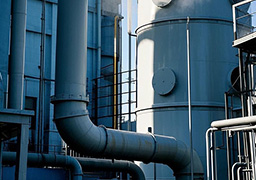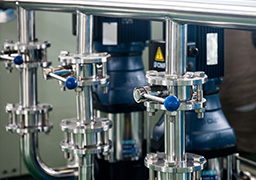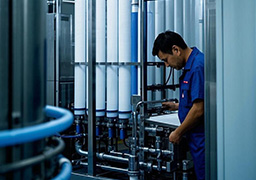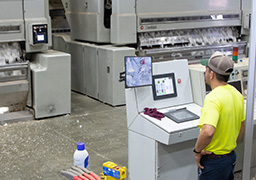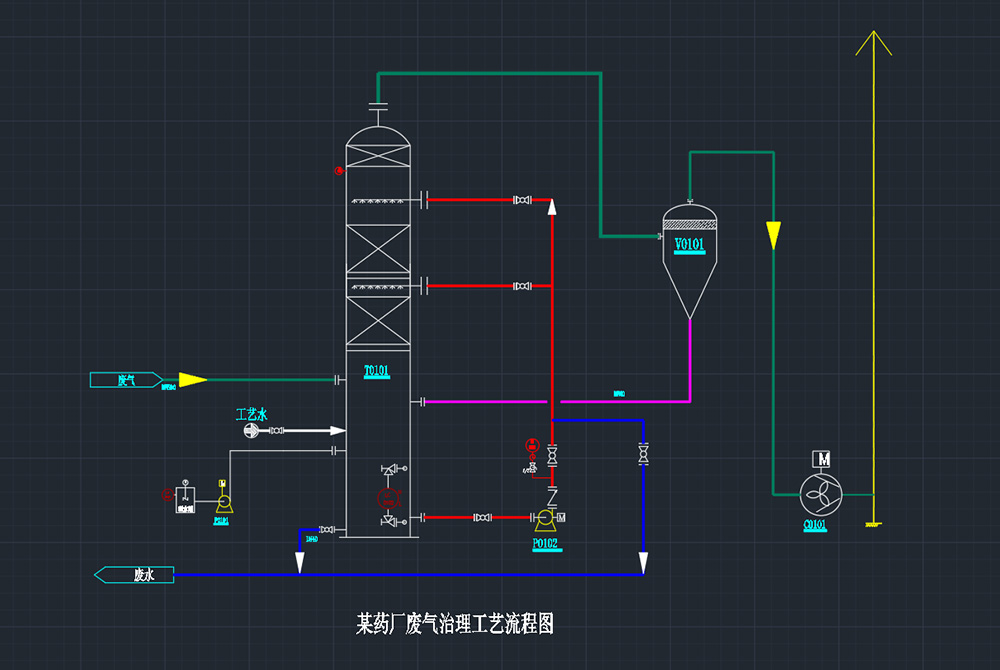Spray tower absorption
Overview: Spray tower absorption is a traditional method for organic waste gas treatment. It is a device that purifies various toxic and harmful waste gases by selecting and preparing different absorbents based on the characteristics of VOCs in different waste gases, and using a spray packing treatment method. It belongs to a two-phase reverse differential contact filling absorption tower. The packing inside the tower is the basic component for gas-liquid two-phase contact, which can provide a sufficiently large surface area without causing excessive resistance to gas flow. Absorbent is the main medium for treating exhaust gas, and its properties and concentration are selected according to the properties of different exhaust gases. The consumption per unit gas treated is determined by calculating the ratio of the molar flow rate of absorbent to inert gas. It is generally composed of tower body, spray system, packing system, water mist removal system, absorbent storage system, etc.
Technological process
1. Packing layer: It is a mass transfer device for gas-liquid two-phase contact. The exhaust gas enters the air inlet of the purification tower along the air duct, first passing through the packing layer, and at the same time, the liquid phase spray liquid is evenly sprayed onto the packing through the liquid distributor, so that it continuously contacts with the exhaust gas and is fully washed and purified.
2. Spray layer: The spray solution (such as alkaline sodium hydroxide absorption solution) is completed by a circulating water pump. The exhaust gas rising from the packing layer is sprayed to lower the fluid concentration and achieve further purification. Completed a complete packing spray washing system. The exhaust gas will continue to rise and enter the second or even more filling spray systems for multiple purifications.
3. Mist removal layer: It is the last purification system of the purification tower. As most exhaust gases contain mist, a mist removal layer is needed to absorb the liquid in the gas and discharge it when it reaches the air outlet.
After N rounds of packing spray absorption purification, the exhaust gas finally reaches the demister layer after liquid removal, and the purification rate generally reaches over 95%.
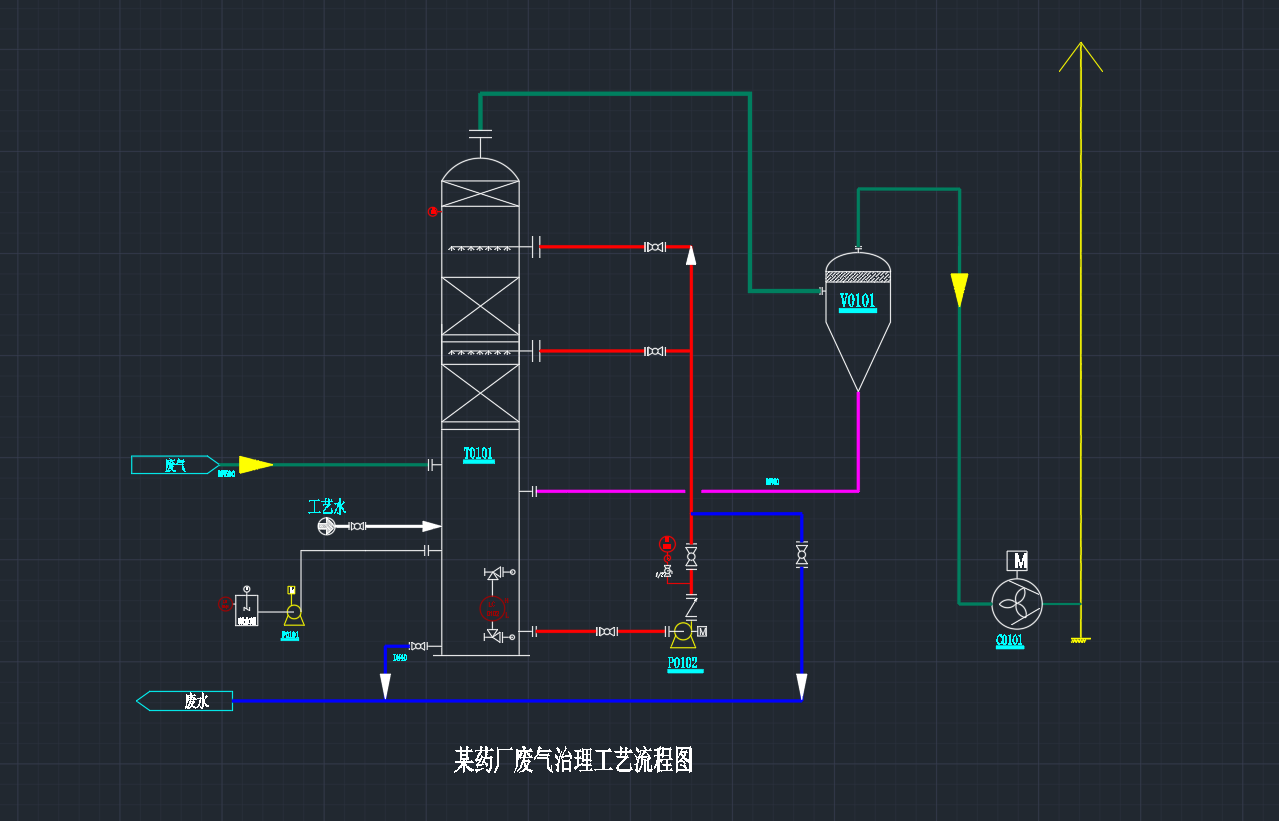
Process flowchart
Technical advantages
1. Suitable for systems with low concentration of absorbed components in exhaust gas and easy reaction with absorbents; It can also be a continuous or intermittent discharge working state.
2. The entire system has low investment in infrastructure and simple operation.
3. The vertical structure occupies a small area and is suitable for economic space installation. It can adapt to both new construction and technological renovation projects.
4. Low resistance, far lower than activated carbon devices, energy-saving, suitable for medium and low air volume.
5. High purification efficiency: The acid (alkali) mist exhaust gas purification tower adopts two-stage reverse spraying, with a large specific surface area of the packing material, which can simultaneously remove particulate matter, various organic waste gas pollutants, and dehydrate and defog. The purification effect can reach 85-95%. Especially suitable for the treatment of high-temperature exhaust gases such as generator exhaust, industrial fire smoke, boiler exhaust, furnace black smoke, and flue gas desulfurization.
Scope of application
1. The main harmful gases suitable for treatment are: benzene series, sulfur oxides (SOx), hydrogen chloride (HCL) gas, hydrogen fluoride (HF) gas, chromium acid mist (CrO3), hydrogen cyanide gas (HCN), hydrogen sulfide (H2S), ammonia gas (NH3), nitrogen oxides (NOx), organic acids, chlorine gas (CL2) and other waste gases.
2. Applicable to the following industries: semiconductor, electroplating, steel, chemical, pharmaceutical, food, printing, mechanical processing, painting, printing, landfill, sewage treatment plants, garbage transfer stations, kitchen waste treatment plants, incinerators, and industrial furnaces for the treatment of exhaust emissions.
Physical picture of the case:





